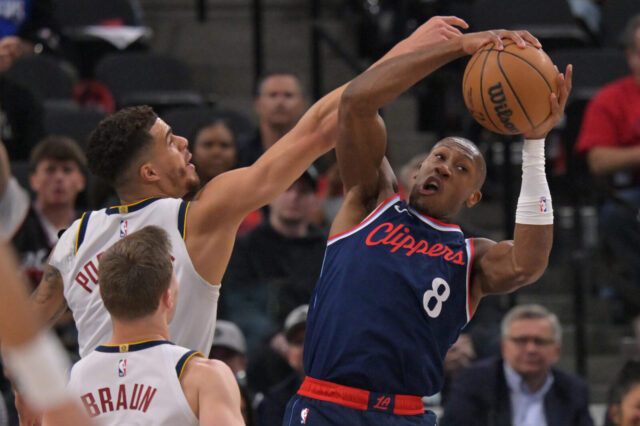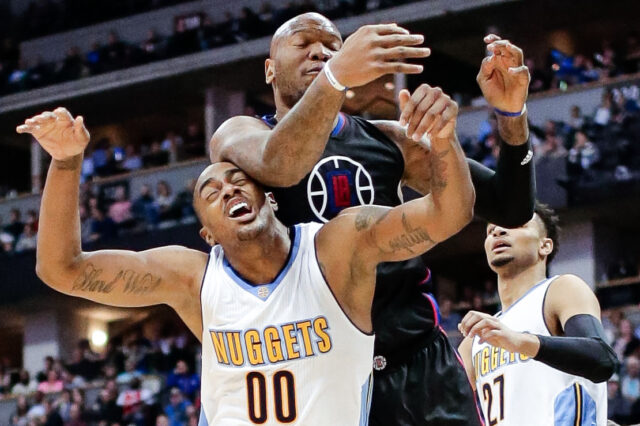Stars are everything in the NBA. Franchises can make the playoffs without a star, but it’s very difficult to advance beyond the first round. Winning a championship? Out of the question. The 2004 Detroit Pistons and 2014 San Antonio Spurs are the best examples of winning the NBA Finals without a superstar, but they had multiple stars to carry the load. Chauncey Billups, Richard Hamilton, Rasheed Wallace, Tony Parker, Manu Ginobili, Tim Duncan, and Kawhi Leonard make up some of the names that carried those teams, not exactly slackers.
But how do stars come to be stars? Are some players guaranteed to meet expectations like LeBron James was? Leonard wasn’t exactly viewed to have star potential by the majority of analysts, but here we are, debating whether Leonard is the next great Spurs player in the mold of David Robinson or Duncan. Teams miss in the draft all the time, and the 14 teams drafting before Leonard’s selection at 15 certainly did.
So how do the Nuggets create their own Kawhi Leonard, a star level talent drafted outside of the top five selections in the NBA draft?
This content is no longer available.
Take the top ten players this year according to Win Shares/48 minutes. Each of the different players had a different path to becoming a star, but they can be grouped in three distinct “tracks” which are:
1. Hand the keys over and let them figure it out themselves
2. Give them moderate responsibility and hope they reward
3. Play them sparingly and hope they develop off the court
The first pathway involves handing players like Chris Paul, Kevin Durant, Blake Griffin, and Russell Westbrook the keys early. All four were top five selections in their respective draft classes, so it feels illogical that the Nuggets should do the same, given every Nuggets draft pick is outside of the top five. That being said, they did so with Emmanuel Mudiay, rightly or wrongly, and he’s had many growing pains. I don’t condemn the Nuggets for making that call, but I’m not sure they might try a different path if given another opportunity.
The second pathway is to make said player an integral part of the rotation (in between 20-30 minutes per game) but not to provide the added pressure of a featured player. Players like Leonard, James Harden, Kemba Walker, and Mike Conley fall into this category. Harden clearly could have been a part of the first category given his talent, but rotation circumstances forced him to the bench for awhile. Each of the other three quickly earned 30 minutes per game by their second season. Walker and Conley needed to make changes to their game and probably weren’t ready for the spotlight immediately, but faith in each player has been rewarded.
This seems to be the path the Nuggets are choosing to provide for Jamal Murray. He currently averages 22.1 minutes per contest, and while he’s not being asked to be the guy, Murray is still becoming an integral piece. It also feels like he’s in line for a minute increase, which looks a lot like what the Thunder chose to do with Harden. Let’s hope Murray is finding his breakout on the Nuggets roster though.
It is also what I thought the Nuggets would do with Nikola Jokic, but so far, that hasn’t happened. More on that later.
The last track involves very little playing time or none at all, choosing not to deal with the development of young players on the court. Players like Jimmy Butler and George Hill had to earn their time on the court, playing less than 20 minutes per game and/or collecting DNP-CDs. While both played a much larger role in the second year, it was because the time was earned, not freely given. This was the path the Nuggets chose to utilize for Gary Harris, who spent the majority of his first season riding the pine and had a breakout sophomore year. While he may not have the same star power, it certainly didn’t look like George Hill would be the player he is today. There is always a possibility that Harris adds more to his game the Nuggets never thought possible.
Is there a correct path for a team to follow? I doubt it, especially in Denver’s case. The Nuggets’ situation is unlike many others around the league with as much playable talent as they have. They could sleepwalk to 30 wins (within reason) playing as many or as few minutes for the young prospects as they want. The idea though is to figure out which path to choose. Most guys become stars before their rookie contract is up though: Hill, Walker, and Conley were the only three to need more time. It is interesting that all three guys are point guards though. Food for thought on a team with a couple of point guard prospects.
I said I would come back to Nikola Jokic. The top ten has a distinct lack of big men with Blake Griffin as the only representative, so I put together a list of minute progressions for the top ten centers, according to some hack’s rankings back in October.
This content is no longer available.
The list has a pretty clear divide. Six of the top ten centers started and stayed in the 28+ minute mark throughout their careers, with the exception of Brook Lopez this year. The major takeaway though? By year 3, all but two were playing 30 minutes per game: DeAndre Jordan and Hassan Whiteside, who was in the D-League for two years.
What does this say about the two Nuggets centers? Well, Jusuf Nurkic is in his third season now, but it’s reasonable to call for a mulligan after last year. If that’s the case, then both him and Jokic will be in their third developmental year next season. The problem? There are only 48 center minutes every game, not counting overtime.
Is it possible that either (or both) could develop like Jordan? Possibly. The odds that one develops into a star in the current platoon situation is very low, as the evidence is stacked against a player that doesn’t play heavy minutes before that point. As this point, it doesn’t necessarily matter who the Nuggets select to be their guy, just as long as they select a guy and play him.
Well, that’s all I have. Let me know if you agree or disagree with my interpretations of the numbers or if there are some factors I am missing. Also, if anyone else has an idea for the Stat of the Week, let me know in the comments section or on Twitter.


